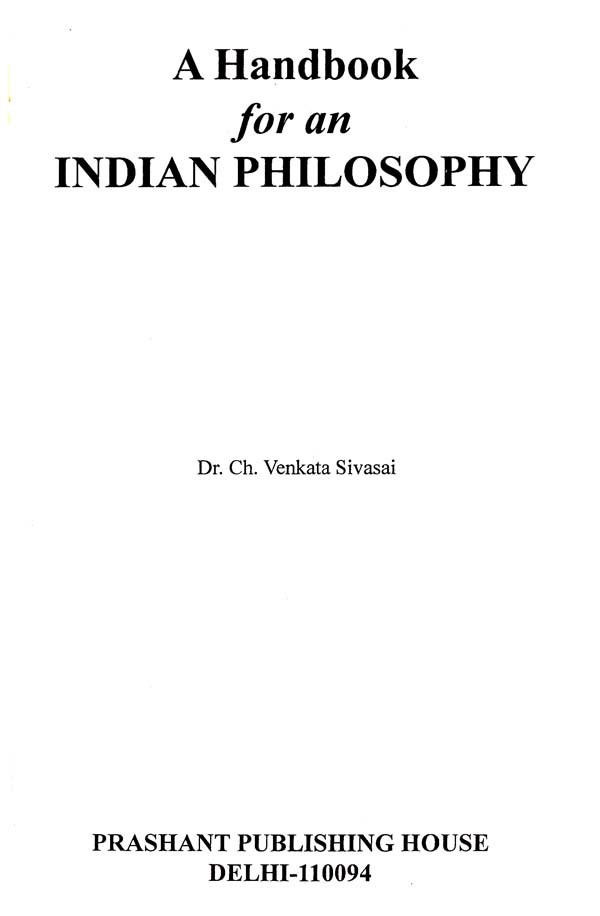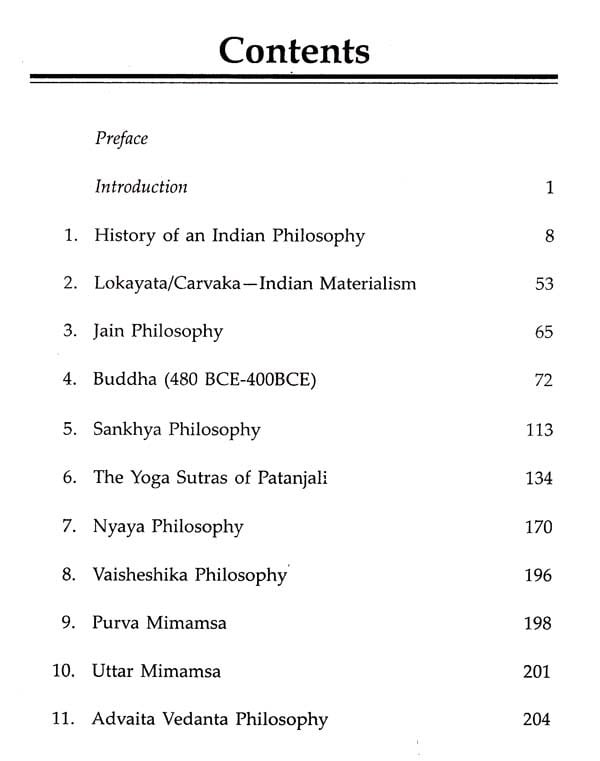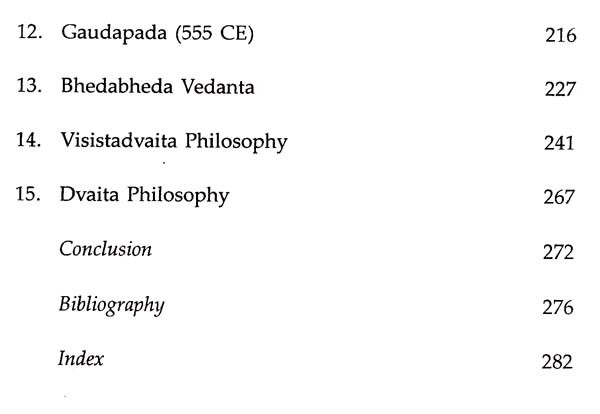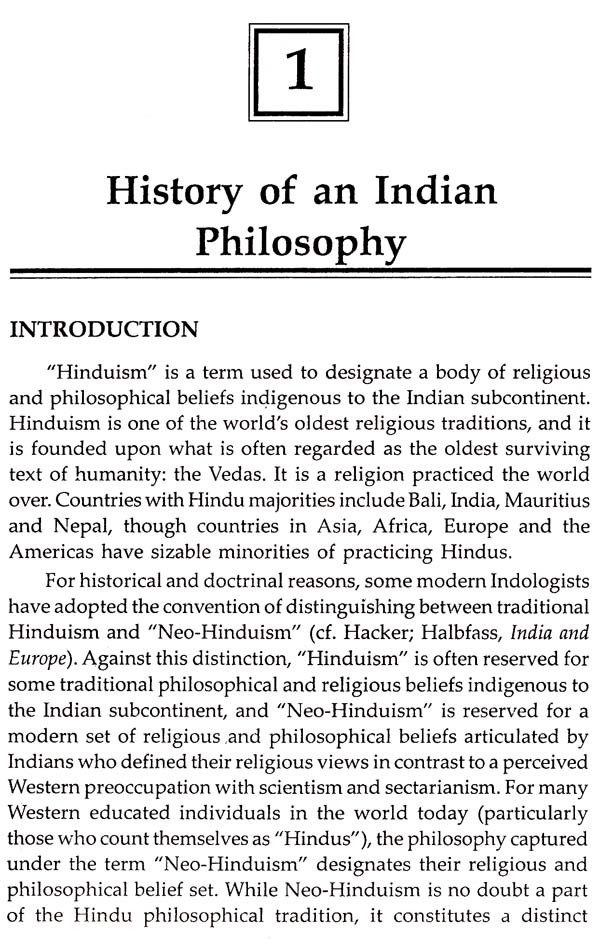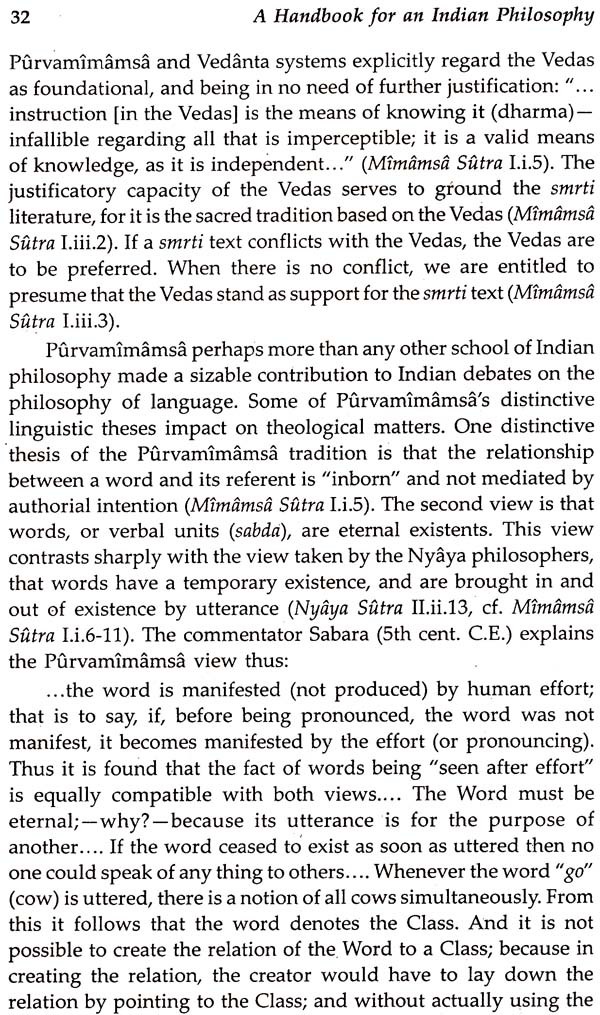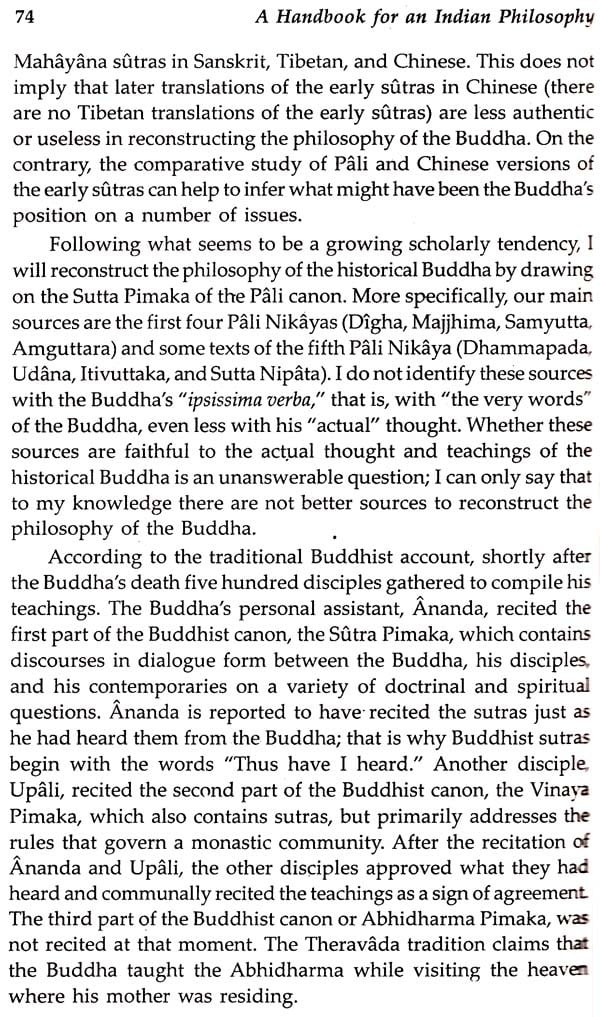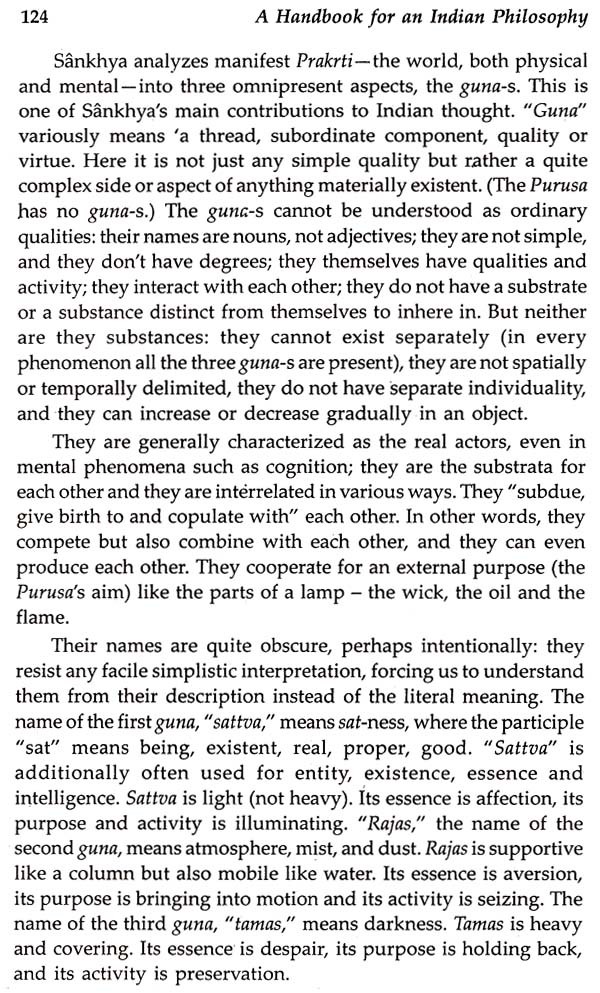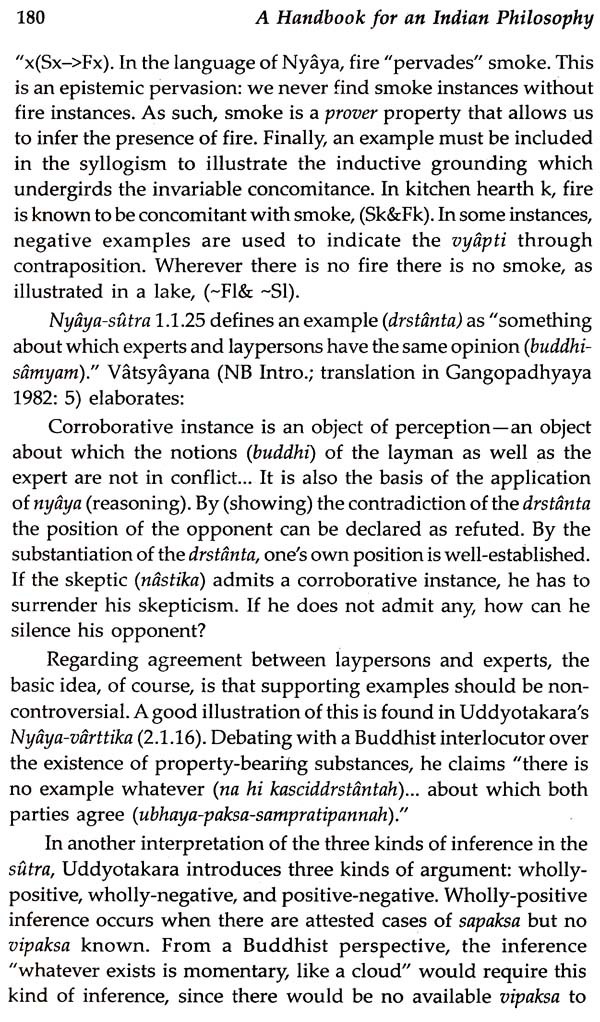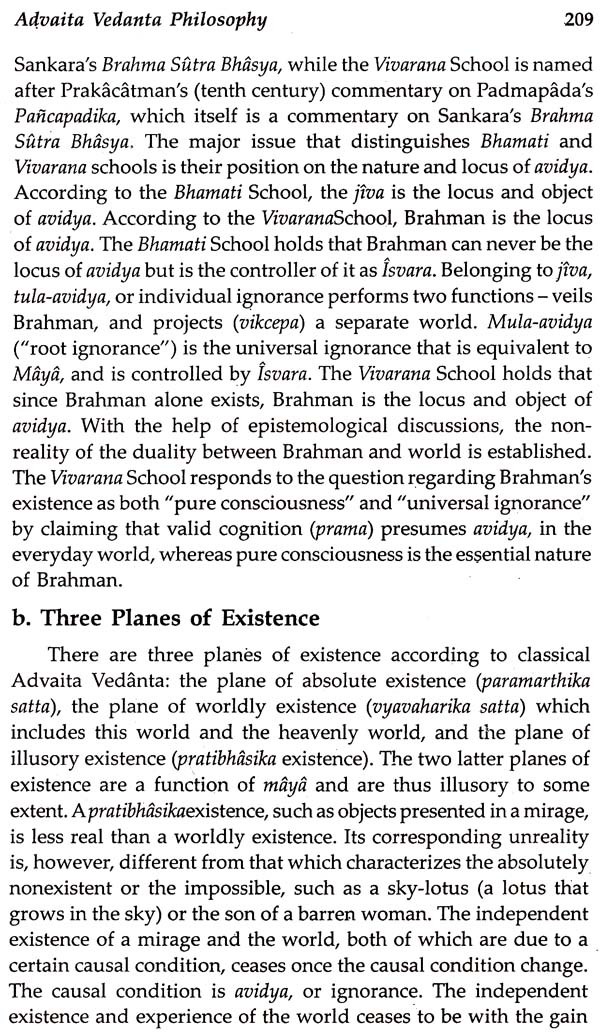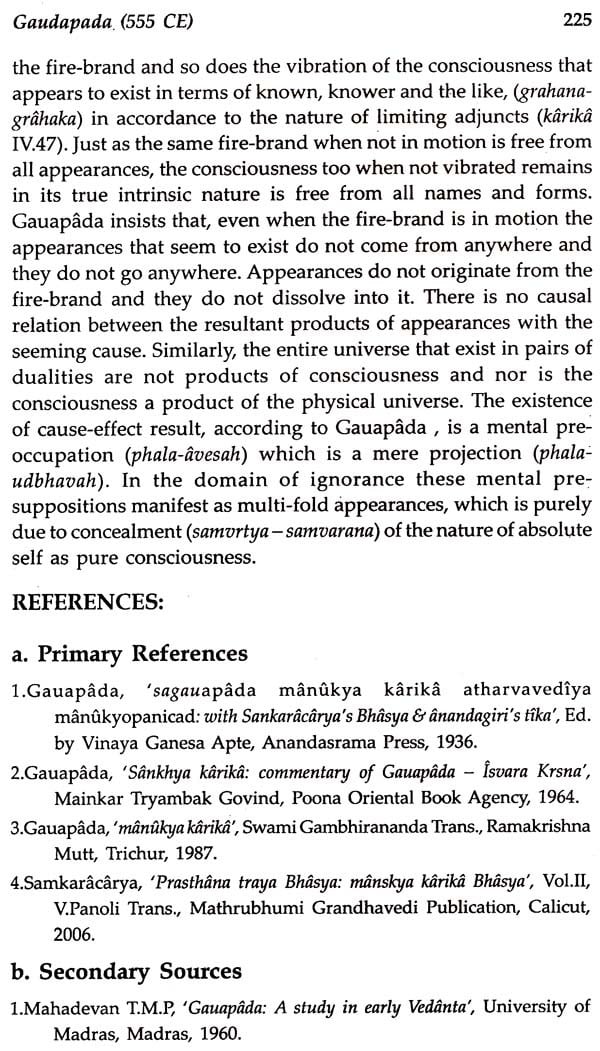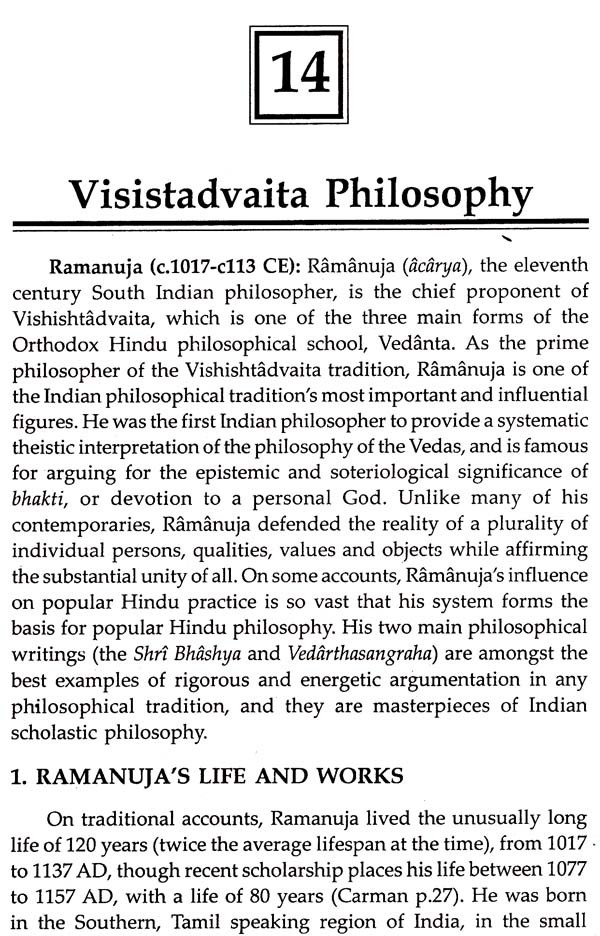
A Hand Book for An Indian Philosophy
Book Specification
| Item Code: | UAR614 |
| Author: | Ch. Venkata Sivasai |
| Publisher: | Prashant Publishing House, Delhi |
| Language: | English |
| Edition: | 2015 |
| ISBN: | 9789380565613 |
| Pages: | 288 |
| Cover: | HARDCOVER |
| Other Details | 9.00 X 6.00 inch |
| Weight | 480 gm |
Book Description
The historians go on debating about the origin of the Aryans and the time-period when the Vedic civilization developed in India. It is believed by the Western scholars that the Aryans descended from the regions of the North Central Asia sometime around 1500 B.C, though this has been challenged by some other learned scholars. Some of the eminent Indian scholars also differ from their Western counterparts, saying that the Aryans were natives of India for long and that the Vedic civilization developed about 4000 to 8000 years ago. The renowned Indian scholar Lokamanya Tilak contends that the first Vedic hymns could have been composed nearly 6000 years ago and the later works like the Upanishads themselves could be nearly 3000 years old. However, we can safely outline the history of Indian philosophies, as per Dr. Radhakrishnan, as follows:
(1) The Vedic period (1500 B.C. to 600 B.C.) (2) The Epic period (600 B.C. to 200A.D.) (3) The Sutra period (200A.D. to 1700A.D.) (4) The Scholastic period (From Sutra Period to 17th century) Lets us go to the detailed manner, (1) The Vedic Period: This period can be regarded as the dawn of civilization in the world. It witnessed the real transformation of man from a prakrit man to a Sanskrit man. The Vedic period covers the rise and the development of the Aryan culture and civilization. The literature of the Vedic period is considered to be the most ancient in the world. It consists of the four Vedas, namely, Rig Veda, Yajur Veda, Sama Veda and Atharva Veda. Each of the Vedas is divided into four parts: The Samhitas (the Mantras), the Brahmanas, the Aranyakas and the Upanishads.
(2) The Epic Period: It is the period of the development of the early Upanishads and the darshanas and is concerned with the enriching of intellect of man. The darshanas paved the way for the growth of the systems of philosophies in India. The invaluable dharma-shastras, the great treatises on ethical and social philosophy, are the gifts of this period. Apart from the extra-ordinary philosophical doctrines, the "non-systemic and the non- technical literature appeared in this age. The great epics Ramayana and Mahabharata are the gifts of this period.
(3) The Sutra Period: Over a period of time, the Vedic literature and the subsequent works grew to a massive scale. The great scholars made efforts to safeguard the rich heritage. That is how the illustrious Sutras were written. The Sutras are, mostly, epigrammatic sentences in the verse-form. They helped to preserve and transmit the treasure of philosophies expressed in the voluminous ancient works. Badarayana (Veda Vyasa), one of the greatest scholars, wrote Brahma-Sutra, also known as Vedanta-Sutra.
(4) The Scholastic Period: This period coinciding with the Sutra period, witnessed the distinguished scholars like Shamkaracharya, Kumarila, Madhavacharya, Ramanujacharya, Sridhara and others. Shamkaracharya's Advaita Vedanta, Ramanujacharya's Vishishtadvaita Vedanta and adhavacharya's Dvaita Vedanta.
Dr. Ch. Venkata Sivasal is presently working as Assistant Professor in School Of Buddhist Studies and Civilization, Gautama Buddha University, Greater Noida, in Utter Pradesh. He has 17 years of teaching experience for P.G, M.Phil, and PhD students. He has published more than 80 Research papers in various National and International reputed Journals. He has been presenting more than 80 papers in various National and international seminars. He has published 6 books. In his Guidance 7 M.Philsare awarded and 4 PH.Ds are pursuing. Previously he worked as Associate Professor, Principal, Head of the Department in various Colleges and Universities. He has completed his M.A, M.Phil, and PhD from University of Hyderabad. He also had done M.Sc (Psychology.) M.A (Education), M.A (Sanskrit). He worked as Translator for Speeches of Honorable His Holiness Dalai lama in Kalachakra 2006 at Amravati (A.P)His Specializations are Buddhist Ethics, Buddhist Philosophy, Buddhist Psychology, Buddhist Education, Social Engaged Buddhism, Bio-ethics, Engineering Ethics, Human Values and Society. He is Life member in Indian Philosophical Congress and Indian Society for Buddhist Studies .He acted as Chair person for many Technical Sessions in Various National and International Conferences. He got Gold Medal for PhD. He visited Vietnam, Thailand Srilankae etc.
The philosophy is concerned with the understanding of the life and the universe. It is aimed at comprehending the nature of existence. Philosophy is a human endeavor that leads to the Ultimate Truth. The English word 'philosophy has its root in the Greek term 'philo-sophia'. The term 'philo' refers to 'love' and 'sophia' refers to human reason.. In Sanskrit, the philosophy is referred to as darshana'. The Sanskrit word 'darshana' has its root in the word 'drs' that means 'to see', 'to look' or 'to view'. "Seeing" or "viewing" the reality and the facts of experience forms the basis of philosophy. According to Indian view, the word 'philosophy' is concerned with 'the revelation of the nature of reality' or 'the vision of Ultimate Truth and Reality'.
Indian Philosophy: The Indian philosophy has its roots in the Vedic period. The great Rishis, settled in the peaceful, invigorating environment of the forests, meditated over the fundamental questions of existence: What is the world? If it's a creation, what are its constituents? Who is the creator? What is life? What is 'truth'? What is 'the nature of reality'? What was revealed to them was expressed in hymns. With the passage of time, the systematized collection of these hymns constituted the Vedas and the Upanishads.
**Contents and Sample Pages**
